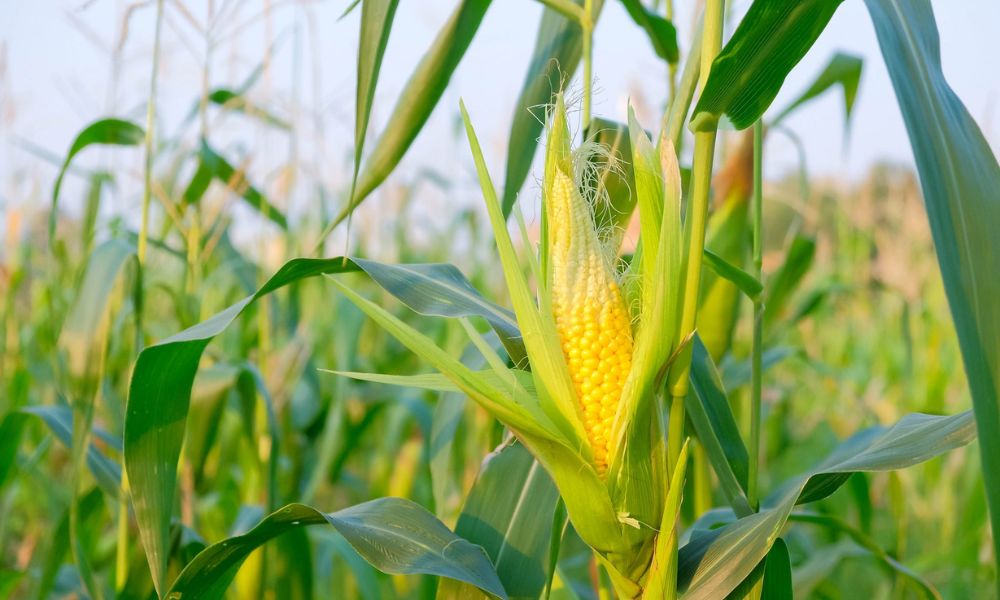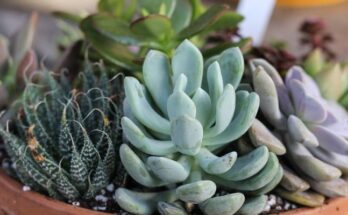|
Getting your Trinity Audio player ready...
|
The world of indoor plants is a captivating one, filled with lush greens and vibrant colors that bring a touch of nature into our homes. One such plant that has captured the hearts of many plant enthusiasts is the Corn Plant (Dracaena fragrans). With its striking appearance and relatively easy care requirements, the Corn Plant has become a popular choice for both beginners and experienced plant owners alike. In this comprehensive guide, we will delve into the fascinating world of Corn Plants, covering everything from their care routines to growth stages.
Scientific Classification of Corn Plant (Dracaena fragrans)
| Kingdom: | Plantae |
|---|---|
| Phylum: | Angiosperms |
| Class: | Monocots |
| Order: | Asparagales |
| Family: | Asparagaceae |
| Genus: | Dracaena |
| Species: | Dracaena fragrans |
Corn Plant Care: Nurturing Your Green Beauty

Light Requirements
- Corn Plants thrive in bright, indirect light.
- Avoid exposing them to direct sunlight for extended periods as it can lead to scorching of leaves.
Watering Routine
- Ensure that the upper inch of soil has dried before you water the plant.
- Over-watering can lead to root rot, so ensure proper drainage.
Humidity Needs
- Corn Plants appreciate higher humidity levels, making them ideal for bathrooms or kitchens.
- Regular misting or placing a tray of water nearby can help maintain humidity.
Temperature Considerations
- They prefer average room temperatures between 65-75°F (18-24°C).
- Avoid sudden temperature drops and cold drafts.
Soil and Fertilization
- Well-draining potting mix is essential for Corn Plants.
- Fertilize with a balanced liquid fertilizer every 2-4 weeks throughout the plant’s active growth period.
Corn Plant Indoor Elegance: Elevating Your Interior Decor

Architectural Elegance
- The Corn Plant’s upright, cane-like stems resemble the look of bamboo.
- Its rich green leaves add a touch of sophistication to any space.
Versatile Placement
- Corn Plants can be placed in living rooms, bedrooms, or even offices.
- They can grow tall, making them excellent floor plants, or you can choose a compact variety for tabletops.
Air Purification
- These plants are known to improve indoor air quality by removing toxins like formaldehyde and xylene.
- Low-Maintenance Beauty
Corn Plants require minimal attention once their care needs are met.

- Their longevity and adaptability make them a perfect choice for busy individuals.
- Corn Plant: Herb or Shrub? Unraveling the Mystery
Distinguishing Characteristics
- The Corn Plant, Dracaena fragrans, is commonly mistaken for a palm due to its palm-like appearance.
- However, it’s not a herb, but rather a woody plant belonging to the Dracaena genus.
Shrub-like Growth
- With proper care, Corn Plants can grow into impressive, tree-like structures.
- They develop a single woody stem that may branch out as it matures.
Foliage and Blooms
- The focal point of the Corn Plant is its lush, arching leaves that resemble corn leaves.
- While mature plants may occasionally produce small, fragrant, white flowers, they are primarily grown for their foliage.
Corn Plant Growth Stages: From Seedling to Splendor

Seed Germination
- Corn Plants can be propagated from stem cuttings or seeds.
- Seed germination can take a few weeks, and patience is key.
Early Growth
- Young Corn Plants have a more compact growth habit with shorter stems and smaller leaves.
- As they develop, the characteristic arching leaves begin to emerge.
Mature Stage
- With time, the plant’s stems become more pronounced, resembling the trunks of small trees.
- The leaves continue to grow longer and wider, creating an elegant display.
Pruning and Maintenance
- Regular pruning of yellow or browning leaves helps maintain the plant’s appearance.
- Removing the top portion of the main stem can encourage branching.
Wrapping Up
The Corn Plant, with its unique appearance and adaptable nature, has earned its place as a beloved indoor plant. Its graceful arching leaves, easy care requirements, and air-purifying qualities make it a fantastic addition to any living space. Whether you’re a seasoned plant enthusiast or just starting your green journey, the Corn Plant’s charm and elegance are sure to captivate you. Remember to provide the right light, water, and care, and watch as your Corn Plant flourishes, becoming a true masterpiece of natural beauty within your home.
Frequently Asked Questions
Q: Can I keep a Corn Plant in a low-light room?
A: While Corn Plants prefer bright, indirect light, they can tolerate lower light conditions. Ensure that you don’t keep them in total darkness.
Q: How often should I water my Corn Plant?
A: Allow the top inch of soil to dry out before watering. Typically, this translates to about once every 1-2 weeks, but it can vary depending on your home’s humidity and temperature.
Q: Is it true that Corn Plants can purify indoor air?
A: Yes, Corn Plants are known for their air-purifying qualities. They can help remove toxins like formaldehyde and xylene from the air, contributing to a healthier indoor environment.
Q: Can I place my Corn Plant outdoors during summer months?
A: Corn Plants are primarily indoor plants and may not tolerate outdoor conditions well. Sudden changes in temperature, sunlight, and humidity can stress the plant. It’s best to keep them indoors.
Q: How tall can a mature Corn Plant grow?
A: Mature Corn Plants can reach heights of 4 to 6 feet or even taller, depending on the variety and care they receive.
Q: Are there different varieties of Corn Plants available?
A: Yes, there are various Corn Plant cultivars with differences in leaf color, size, and growth habits. Some popular varieties include ‘Massangeana’ with yellow stripes and ‘Compacta’ with shorter stems.
Q: Can I propagate my Corn Plant from cuttings?
A: Yes, Corn Plants can be propagated from stem cuttings. After allowing the cuttings to air dry for a day or two, plant them in a well-draining soil mixture. Be patient, as it may take a while for roots to form.
Q: Should I fertilize my Corn Plant during the winter months?
A: Corn Plants experience slower growth during winter, so you can reduce the frequency of fertilization. If you do fertilize, use a diluted, balanced fertilizer every 6-8 weeks.
Q: Are the white flowers on Corn Plants fragrant?
A: Yes, the small white flowers produced by mature Corn Plants can have a pleasant, subtle fragrance.
Q: What’s the significance of the name ‘Corn Plant’ for this species?
A: The name ‘Corn Plant’ comes from the resemblance of the plant’s leaves to those of corn. The arching leaves mimic the appearance of corn leaves, giving the plant its unique visual appeal.



